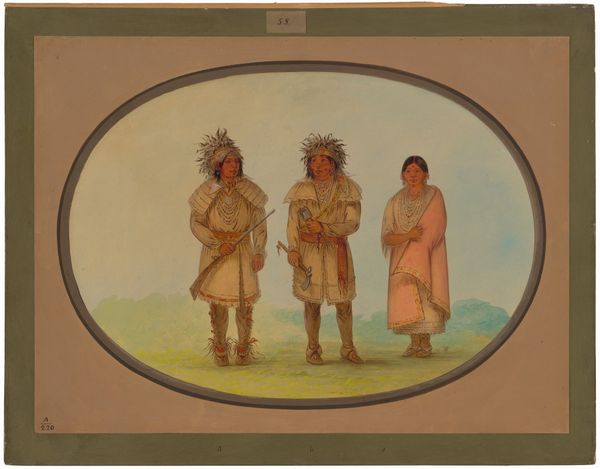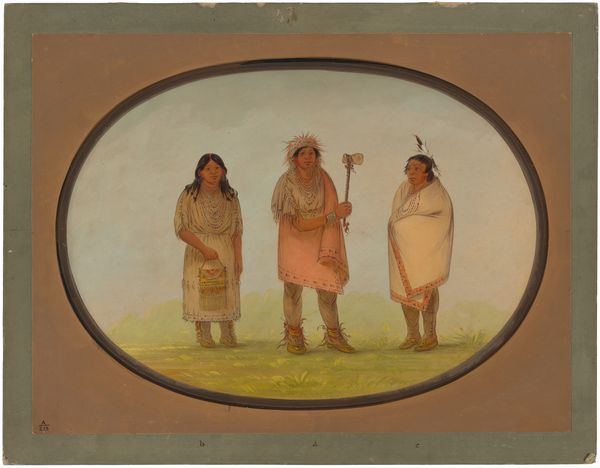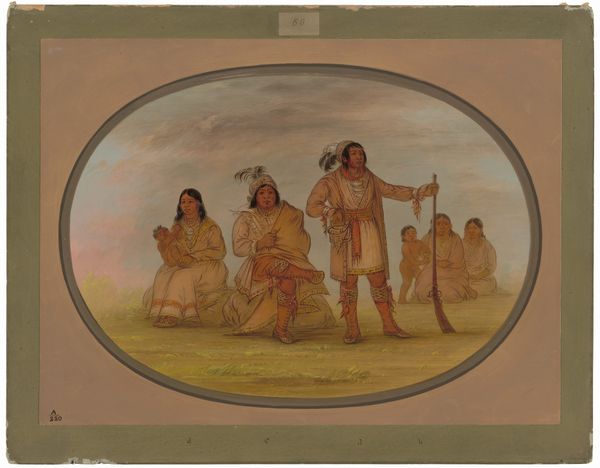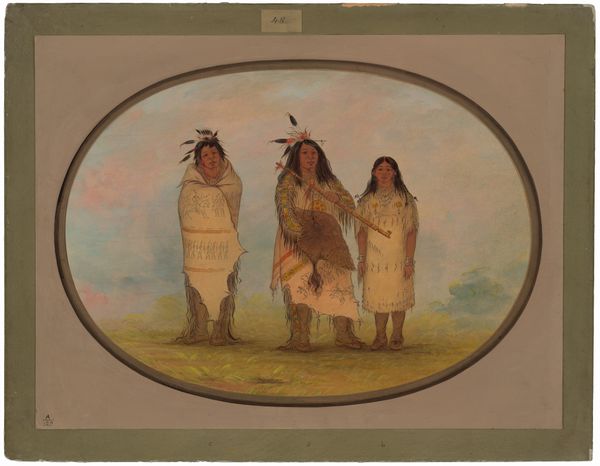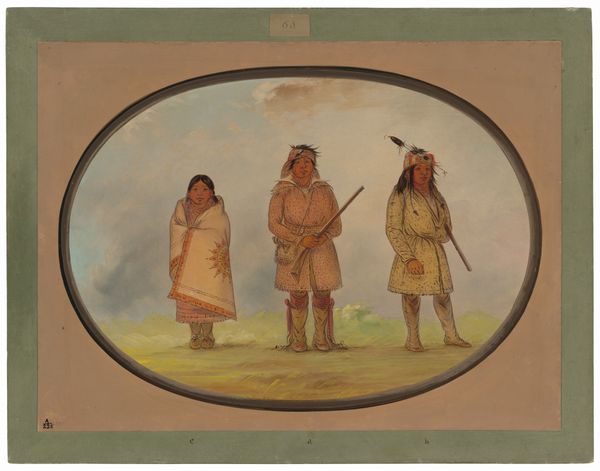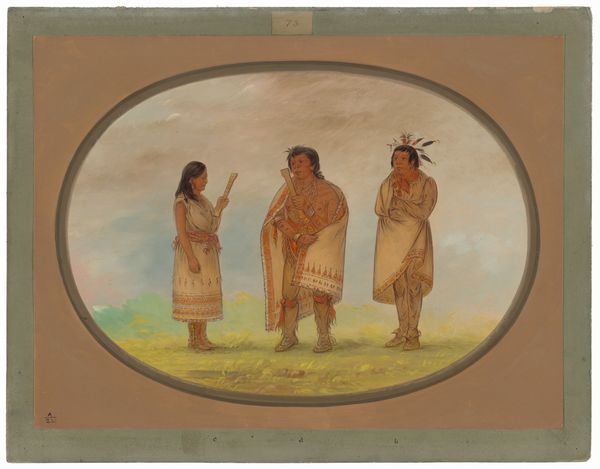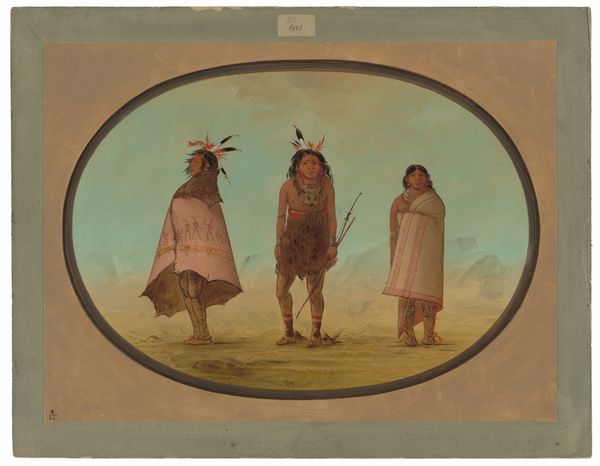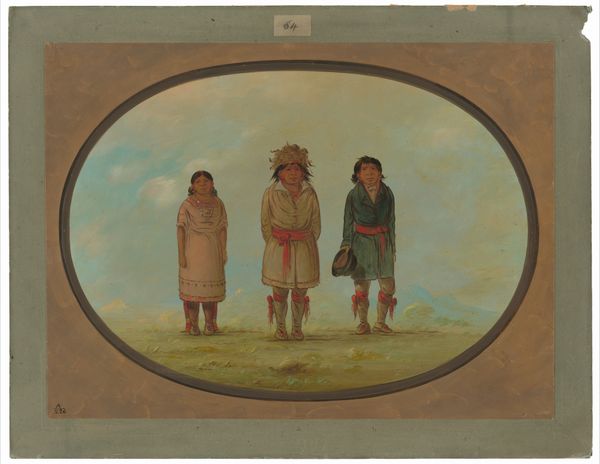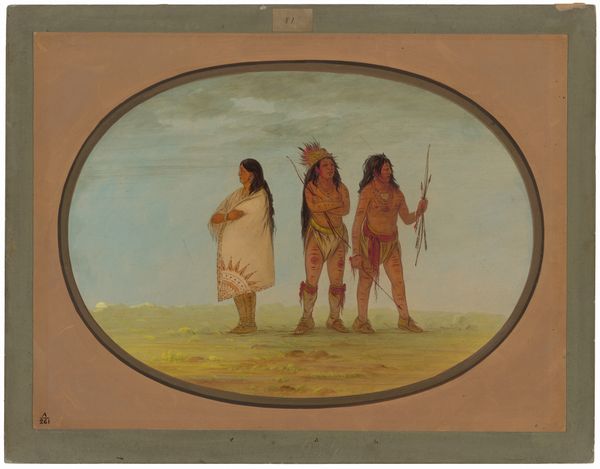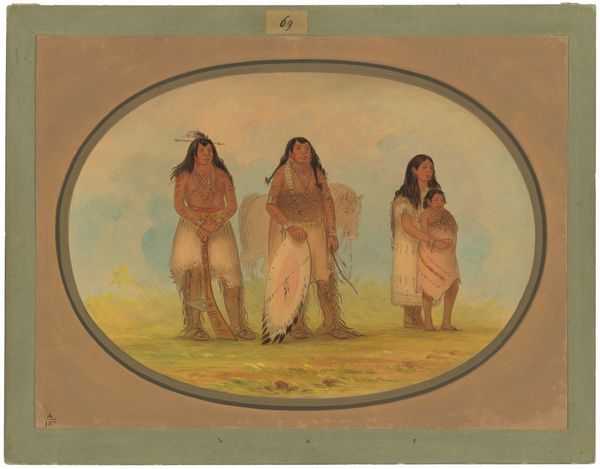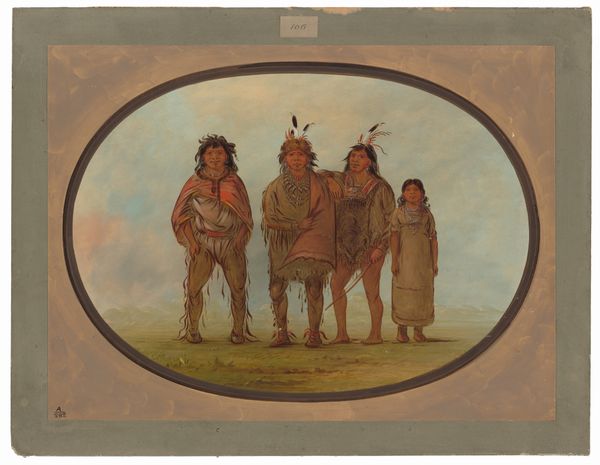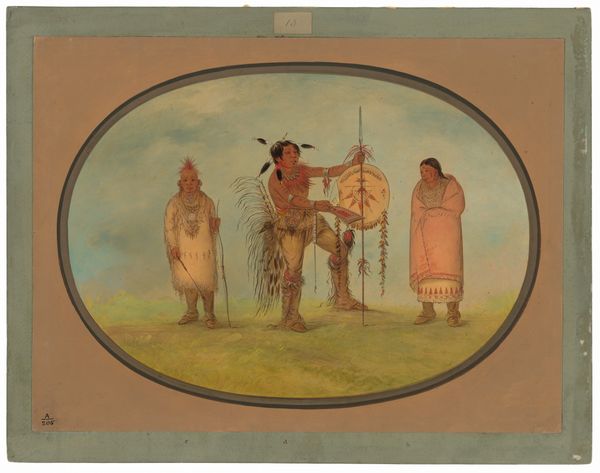
painting, gouache
#
portrait
#
water colours
#
painting
#
gouache
#
watercolour illustration
#
watercolor
Dimensions: overall: 47.6 x 63.9 cm (18 3/4 x 25 3/16 in.)
Copyright: National Gallery of Art: CC0 1.0
Editor: Immediately, I'm struck by the contrast: soft watercolor juxtaposed against what seems a potent commentary on cultural imposition. Curator: Indeed. This is George Catlin's "Oneida Chief, His Sister, and a Missionary," made between 1861 and 1869. The composition, set within that deliberate oval frame, seems to trap its subjects. Notice the arrangement: sister, chief, missionary—a visual hierarchy perhaps? Editor: It’s subtle but palpable. Look at the rendering of clothing and personal adornment: Indigenous attire meticulously detailed; the missionary presented in severe, almost industrial fabrics. Curator: Precisely. The layering of meaning in this watercolor extends to its materiality. Catlin wasn’t merely representing; he was also interpreting. Editor: I see it too—especially given that these watercolor works seem very different from Catlin’s Plains Indian paintings, particularly in the ways those canvases handle light, color, and volume. I would be interested to compare and contrast. The choice of watercolor—usually associated with landscape and sketching—itself raises questions. How does it change the perceived authenticity? Curator: Consider the act of cultural portraiture in the context of manifest destiny. Here, the materials arguably undermine assumptions of objectivity and celebrate indigenous lifeways during aggressive cultural suppression. Editor: This raises essential questions about artistic agency and responsibility in representations across time. To really understand how this particular piece participates in these systems of visual interpretation is a very large research project indeed. Curator: Absolutely. It's a small format, yes, but I think it offers a deeply profound entry point into the complex interplay of image-making, history, and cultural narrative. Editor: Yes, the subdued palette heightens the sense of lament. Each compositional decision tells a story beyond what is immediately visible in terms of medium and subject.
Comments
No comments
Be the first to comment and join the conversation on the ultimate creative platform.
